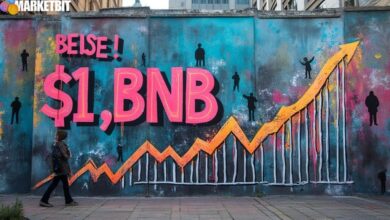Ripple’s RLUSD Stablecoin Supply Surpasses $500 Million

- Main event, leadership changes, market impact, financial shifts, or expert insights.
- Ripple stablecoin supply hits $501 million milestone.
- BNY Mellon becomes primary reserves custodian for RLUSD.
Ripple’s RLUSD stablecoin has seen its supply exceed 501 million tokens due to increasing market demand and institutional adoption. Ripple’s partnership with BNY Mellon as the primary custodian marks a significant step in reinforcing trust and compliance among users. Key players in these developments include Ripple’s CEO Brad Garlinghouse and CTO David Schwartz, pivotal in the RLUSD initiative.
The milestone positions RLUSD among the world’s top 20 stablecoins. The integration into Ripple Payments bolstered its use for enterprise transfers, promoting liquidity growth. BNY Mellon plays a crucial role in safeguarding reserves, enhancing institutional trust in RLUSD’s asset backing. Each token is backed by cash, US Treasuries, and cash equivalents, with monthly attestations confirming reserves.
Ripple has selected @BNYglobal as the primary reserves custodian for $RLUSD, an enterprise-grade stablecoin built for real-world utility, supported by one of the largest and most trusted financial services companies in the world. — Brad Garlinghouse, CEO, Ripple,
The move aligns seamlessly with discussions on U.S. stablecoin legislation, emphasizing Ripple’s compliance-focused approach, which enhances its market stance. The partnership with OpenPayd and AMINA Bank’s offering signal profitable institutional integration prospects for RLUSD, boosting transactional utility. Industry insiders note RLUSD’s successful adoption, predicting ongoing shifts in the digital asset sector as regulators eye increased crypto surveillance. Emphasis on compliance is highlighted through Ripple’s alignment with BNY Mellon’s stringent storage protocols. Historical trends, especially comparisons to high-capacity stablecoins like USDT, indicate potential for significant strides. RLUSD’s evolving role in Ripple’s payment network signifies its rising importance in cross-border transactions, potentially affecting XRP’s utility.




